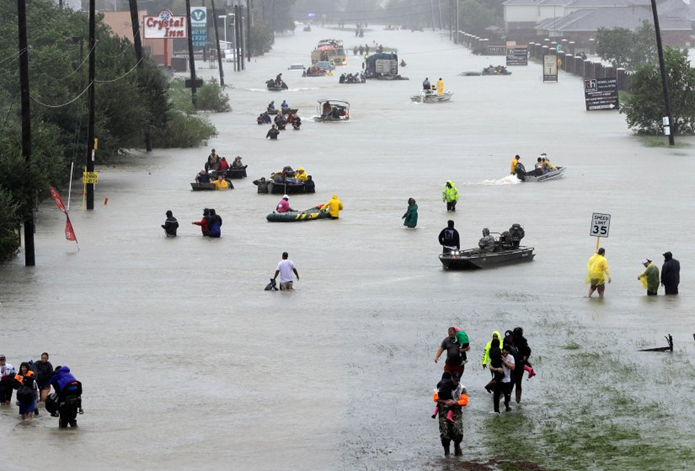
It’s been almost two weeks since Hurricane Harvey made landfall in Texas, and a week since the rains stopped. All told, more than 50 inches of rain fell in Houston over the course of the storm. 50 inches! That’s nearly double our average annual rainfall. No, we’re not expecting a hurricane any time soon — or ever — in Minnesota, but that doesn’t mean there are no lessons for us.
Connections to climate change followed damage reports, as well as criticism of city officials for not being prepared, planners for not planning better, and emergency managers for not conducting an orderly and timely evacuation.
I’ve talked with lots of people about the hurricane, and at some point everyone says something like, “This is why I live in Minnesota — to not have to deal with storms like these.” Me too! I also don’t want to live where spiders are bigger than my head, alligators and snakes break into my house, or scorpions sneak into my shoes.
While we don’t have to deal with hurricanes, we do have weather-related risks that are intensified by climate change. Are Minnesotans are prepared for:
Extreme precipitation and flooding
- In the past 45 years, Minnesota has experienced nine mega-rain events, compared to four in the 110 years between 1860 and 1970
- The size of the average 100-year, 24-hour rain event in the metro is rising. It was 7.4 inches between 1980 and 2010, and six inches from 1940 to 1970
- Infrastructure designed for historic normals is at risk, along with public safety and our waterways
More intense heat in summers
- The Twin Cities region has around 12 days where temperatures exceed 90 degrees and maybe one day that tops 100. This number is projected to increase to a staggering 60-70 days over 90 degrees by 2060, with 25-30 of those days exceeding 100 degrees
- Overnight lows and dew points are expected to warm, increasing the overall “feels like” temperature and making it harder to cool off overnight
- Urban heat islands will be exacerbated. A study from the University of Minnesota found that the Twin Cities can be as much as nine degrees hotter than surrounding communities due to the heat absorbed and radiated back by roads, buildings, and parking lots. This harms vulnerable populations and affects the lifespan of infrastructure
Warmer winters
- Our winters are warming at the fastest rate in the nation — 11 degrees per century since 1960 — and winter rainfall frequency has increased roughly four-fold since the 1970s
- More freeze-thaw cycles cause more potholes and vehicle wear and tear, and encourage use of deicing chemicals to keep roads, sidewalks, and parking lots safer. This further breaks down infrastructure and pollutes surface waters
At Freshwater Society, we’ve been working with metro cities to review anticipated risks and community vulnerabilities and strengths for dealing with climate impacts. Communities are preparing, but there is still a lot of work to do.
Comprehensive plan updates provide the opportunity to build climate resilience into documents that guide development. Will we heed the warning of Hurricane Harvey and take advantage of this opportunity to plan for a different kind of future?
— Jen Kader, Program Manager